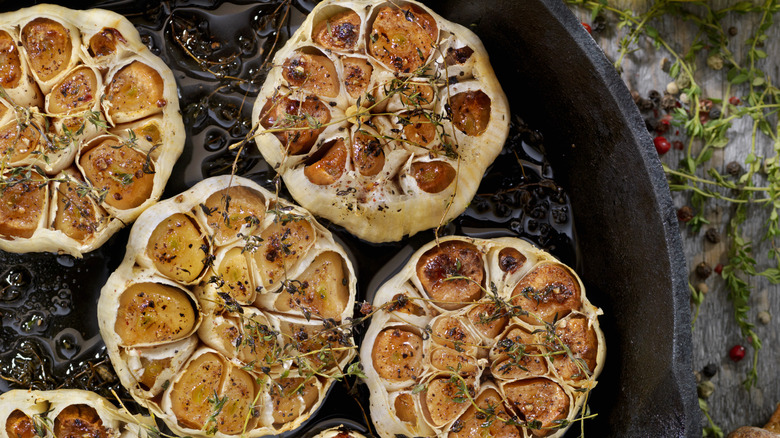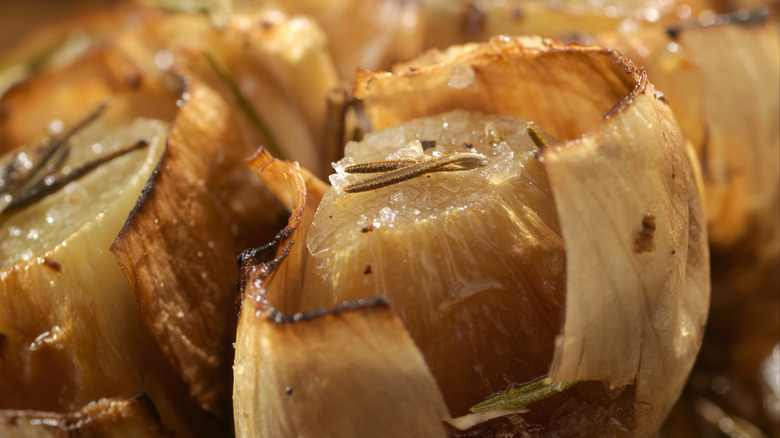Why You Should Start Roasting Garlic Cloves Whole
Those of us who love garlic find it indispensable in just about every savory recipe. But not everyone likes its strong, pungent spiciness. However, there's a hack to convert garlic haters into lovers. Roasting the garlic will mellow its flavor, and the best way to do this is by slow roasting the whole head of garlic instead of separating the cloves.
There are many advantages to this method. Firstly, when you roast a whole head, you don't have to deal with peeling and chopping individual cloves. Once roasted, just squeeze the softened cloves out of the skins and use them as needed. This method also lets you add the flavor of cooked garlic without the risk of it turning bitter if it burns — not even the biggest garlic fanatic likes the flavor of burnt garlic!
Garlic has a higher percentage of long fructose chains than other members of the allium family like onions and shallots, which makes it much more susceptible to burning quickly. On the other hand, these fructose chains break apart into simple sugar when garlic is slow roasted, making its flavor sweeter and nutty, with a buttery consistency that makes it perfect for blending into other ingredients or simply spreading on a piece of hot sourdough bread.
How to roast and use whole garlic cloves
To roast the garlic, trim the head stem-side on top about ¼ to ½ inch to leave the cloves exposed. Remove any loose paper skins off and place garlic heads, cut side up, on a baking pan and drizzle a little olive oil, then season with salt. Some people like to wrap them in foil individually or cover the baking pan with foil, but you don't have to. Roast in an oven preheated to 375 degrees Fahrenheit for 45 minutes (avoiding the roasted garlic temperature danger zone), then check to see if the garlic heads are soft. You can roast longer if you prefer a more caramelized flavor, and there are other ways to roast whole garlic, so feel free to experiment.
You can then use these gold nuggets anywhere you need a bit of garlic flavor, from salad dressings to hummus, a warming cheesy roasted garlic soup, a mushroom and roasted garlic risotto, or mixed with tomatoes and lentils for a hearty lunch bowl. If you don't use all of it immediately, peel the cloves, cover with olive oil, and store them in an airtight container in the refrigerator for up to a week. You can also mash the cloves into butter or freeze them individually for future use.

